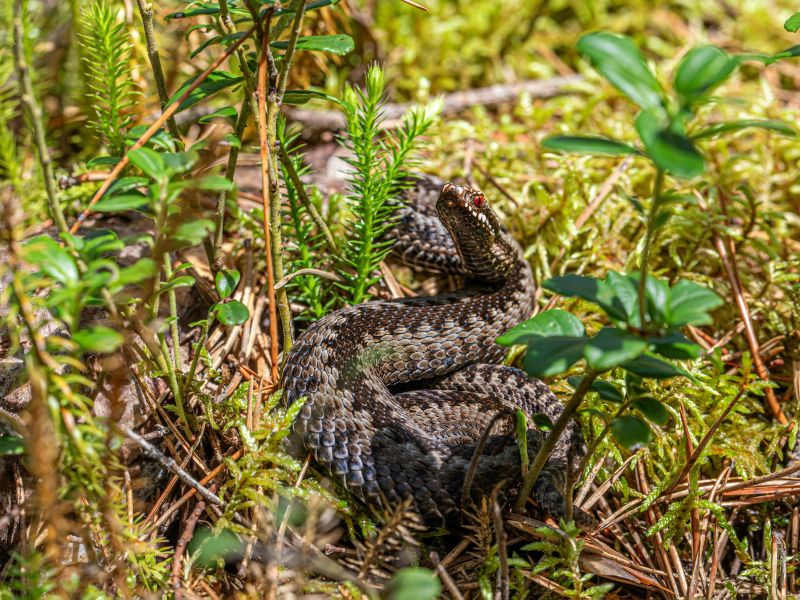Who's Your Mate? Pet News® doesn't use cookies or trackers and doesn't sell people's data.
For more information, read Who's Your Mate? Pet News®'s privacy policy page.
Life-and-death snake bite advice issued to pet owners

Incidents 'especially common' during warmer months
Dog owners have been urged to learn what to do if their beloved canine is bitten by the UK’s only species of venomous snake.
Veterinary charity the PDSA said that while adders tend to keep out of people’s way, dangerous encounters can occur when curious pet pooches go sniffing, stepping near or pouncing at them.
Startled adders can lash out in defence, injecting venom via their sharp fangs.
Most bites occur between April and September but are ‘especially common’ between June and August, and while most bites aren’t life-threatening, it’s essential to treat them as an emergency and contact a vet immediately.
Prompt treatment can be the difference between life and death.
Adder bite symptoms range from fever, lethargy, weakness and collapse to seizures, clotting, organ failure and loss of life, and can develop over a few minutes to an hour.
Signs a dog may have been bitten include swelling around the bite, limping and tiny bite marks, but venom can also trigger vomiting and diarrhoea, pale gums, panting and drooling.
Face and neck injection sites are particularly dangerous due to the risk of swelling blocking the airways.
Death may be sudden if venom enters the bloodstream.
Treatment can include pain relief, monitoring, fluid drip and antihistamines, and for more serious cases vets may deploy anti-venom, antibiotics or even surgery to remove necrotic flesh around the wound site.
Owners are advised to avoid well-known adder hotspots from April to September or to keep dogs on a lead and on a path in those areas.
Holidaymakers should also research their destination for information on any potential adder hotspots.
Adders are small grey or brown snakes with a distinctive V-shaped marking on their head and dark zigzag down their back.
They tend to live among long grass, woods, moors and by the coast such as among dunes and coastal paths, being generally active from February to October and then hibernating.
Recent press reports of adder bites include the death of a Jack Russell bitten in Thetford Forest in March, as reported by the Eastern Daily Press, and a springer spaniel that suffered a horrific open facial wound in Northwich, as reported in various publications via SWNS press agency earlier this month.
The PDSA has issued advice on what to do in the event of an adder bite.
A spokesperson for the charity said: “Do not attempt to treat your dog at home.
“Firstly, stay calm.
“If you see the snake, try to remember what it looks like, or take a photo from a distance.
“Do not try to find the snake, get close to it, touch it or harm it - important to note, adders are a protected species so it is illegal to hurt or kill them, and they can bite people if disturbed.
“Keep your dog as still as possible to prevent venom spreading around their body.
“Leave the bite alone - don't apply a bandage or tourniquet.
“Call your vet as soon as you can to let them know you are coming down to the practice.
“If possible, bring your car to your dog or depending on their weight, carry them to it.”
The UK’s other two species of snake - grass snakes and smooth snakes - aren’t venomous.
More advice is available at www.pdsa.org.uk/phh



